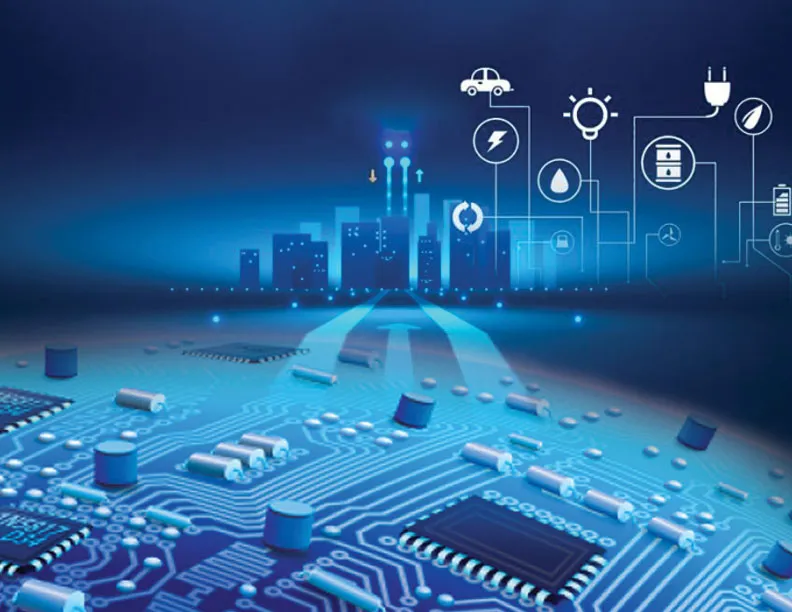Immersing yourself in the world of power electronics can be a thrilling journey. This field, that significantly contributes towards effective energy conversion, continues to shape our modern tech-crazed society. Did you know that around 30% of all power generated worldwide is processed through power electronic systems? Here’s your chance to delve deeper into the fascinating discipline of power electronics.
Understanding Power Electronics
Before diving in, it’s vital to first understand what power electronics refers to. At its heart, power electronics is an application-oriented domain of electronics, which deals primarily with the conversion and control of electric power. It utilizes semiconductor devices, predominantly diodes, thyristors, IGBTs and MOSFETs, for switching purposes. The main objective? To convert electrical energy from one form to another in the most efficient way possible.
The Birth and Evolution of Power Electronics
Power electronics isn’t a new science; its roots date back to the late 19th century. After the discovery of semiconductor devices, power electronics started advancing rapidly with the introduction of silicon-controlled rectifiers in the 1950s. Fast forward to today – with advancements in technology, power electronics has integrated itself into various industries including automotive, aerospace and renewable energy.
Power Electronic Converters
An integral part of power electronic systems is the power electronic converter. These devices are used to convert and control electrical energy, alternating between AC and DC or changing the voltage levels. They come in three basic types: AC/DC converters (Rectifiers), DC/AC converters (Inverters) and DC/DC converters (Choppers). Each type plays a unique role in different applications.
Key Components of Power Electronics
You must familiarize yourself with the key components in power electronics to understand its complex operations better. These components include active devices like Thyristors, IGBTs, MOSFETs and many more which act as switches in power electronic systems. Passive components such as capacitors, inductors and resistors are equally important since they help control current flow and filter signals.
Applications in Renewable Energy
Power electronics has significant roles in renewable energy systems. It’s essential for integrating renewable energy sources like solar, wind and hydro into the grid. Power electronic systems enable efficient conversion and storage of energy harvested from these resources. Most modern solar inverters, for instance, use power electronics technology for converting DC power into AC for use in the grid.
Applications in Electric Vehicles
Electric vehicles are another area where power electronics plays a pivotal role. It helps to operate traction motors efficiently and manages varying voltage levels within the vehicle’s system. Besides driving the electric motor, it also controls the charging system, ensuring safe and effective charging of the vehicle’s battery.
Industrial Applications
In industries, you will see numerous applications of power electronics too. Examples include variable-speed motor drives used in compressors and pumps, or power supplies for electronic devices. They also play important roles in heating and welding processes by regulating electric power effectively.
The Impact on Energy Efficiency
The introduction of power electronics has profoundly influenced energy efficiency. With the ability to handle electricity at a high level of precision, wastage caused by electricity leakage has massively reduced. It contributes towards the goal of using renewable energy more sustainably.
The Role of Switching Devices
Switching devices are the backbone of any power electronics system as they allow accurate control of power flow. From Thyristors to MOSFETs, these devices act as electronic switches within power electronic circuits. Choosing the right switching device is crucial, as each comes with its own voltage and current specifications.
The Future of Power Electronics
Given the ever-increasing need for energy efficiency, the future of power electronics looks promising. Expect more advancements in semiconductor devices, more efficient converters, and a greater push towards integration with renewable energy sources. In essence, power electronics will continue to evolve to meet our expanding energy needs.
Choosing Your Power Electronics Path
Whether you’re a novice, or looking to advance your knowledge in power electronics, there’s a path for you. Many resources offer comprehensive courses on power electronics from basics to advanced levels. Start with understanding the basic concepts and then delve deeper into converters, applications and more as you progress.
Challenges in Power Electronics
Like any other field, power electronics comes with its own set of challenges. These include heat dissipation issues in active components, dealing with high-frequency noise and ensuring system reliability under different operating conditions. However, ongoing research is focused on overcoming these hurdles and making power electronic systems even more efficient.
Understanding Specifications
To thoroughly grasp power electronics, pay attention to specifications. Understanding the specifications of components like switching devices is essential for designing reliable circuits. It helps evaluate component performance under varying conditions and can prevent possible system failures.
A Brighter Tomorrow
Power electronics powers our tomorrow while striving for a sustainable and efficient energy model. It’s not just about converting electricity from one form to another; it’s about harnessing our resources effectively for a brighter future that respects both technology and nature.


